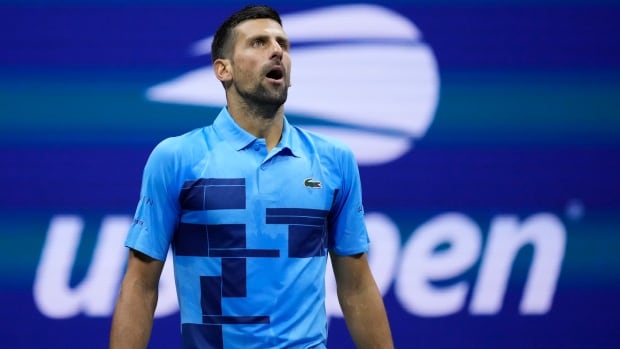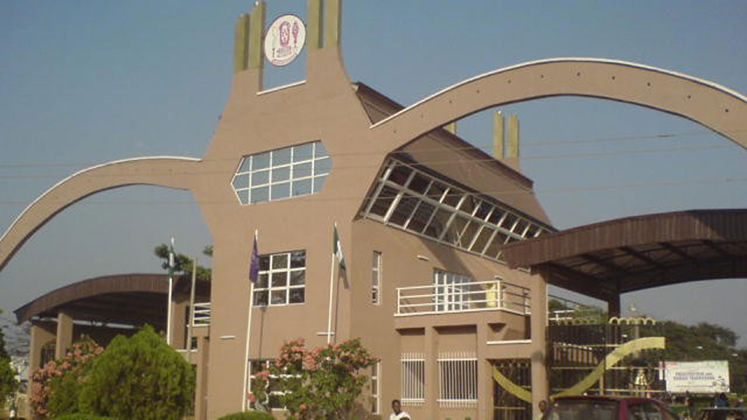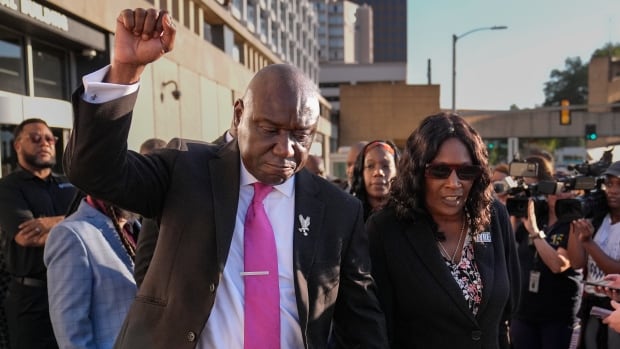Novak Djokovic did not go easy on himself when assessing the listless way he performed from the start of the U.S. Open, pointing to his sloppy serving as the main reason the defence of his 2023 title surprisingly ended in the third round.
“I have played some of the worst tennis I have ever played, honestly,” Djokovic said, just after midnight as Friday turned to Saturday. “Serving — by far — the worst ever.”
With 14 double-faults, raising his tournament total to 32, Djokovic bowed out with a 6-4, 6-4, 2-6, 6-4 loss to 28th-seeded Alexei Popyrin of Australia, another shocking result at Flushing Meadows one night after Carlos Alcaraz exited.
The biggest win of his career 👏 <br><br>Take a bow, <a href=”https://twitter.com/AlexeiPopyrin99?ref_src=twsrc%5Etfw”>@AlexeiPopyrin99</a>!<a href=”https://twitter.com/usopen?ref_src=twsrc%5Etfw”>@usopen</a> | <a href=”https://twitter.com/hashtag/USOpen?src=hash&ref_src=twsrc%5Etfw”>#USOpen</a><a href=”https://t.co/JpipkKhScE”>pic.twitter.com/JpipkKhScE</a>
—@atptour
“It was just an awful match for me,” the No. 2-seeded Djokovic said. “I wasn’t playing even close to my best. It’s not good to be in that kind of state where you feel OK physically, and of course you’re motivated because it’s a Grand Slam, but you just are not able to find your game. That’s it. The game is falling apart, and I guess you have to accept that tournaments like this happen.”
Not often for him, though.
After all, Djokovic was trying to become the first player in tennis history with 25 Grand Slam singles titles. Instead, after knee surgery in June, he finishes a year without claiming at least one major championship for the first time since 2017. Before that, it hadn’t happened since 2010.
Also of note: 2024 now becomes the first season since 2002 in which none of the Big Three of men’s tennis — Djokovic, Rafael Nadal and Roger Federer — earned a Slam trophy.
Worst U.S. Open showing
The third-round exit equals Djokovic’s worst showing at Flushing Meadows; the only other occasions he was beaten that early at the U.S. Open came in 2005 and 2006. The man who defeated Djokovic 18 years ago, International Tennis Hall of Fame member Lleyton Hewitt, is now Australia’s Davis Cup captain and was sitting in Popyrin’s guest box in Arthur Ashe Stadium.
Djokovic, who is 37, has reached the final in Ashe 10 times, leaving with the title in 2011, 2015, 2018 and 2023.
On Friday, though, he was sluggish and emotionally flat, perhaps residual fatigue after collecting his first Olympic gold medal for Serbia by beating Alcaraz in the final at the Paris Games earlier in August.
“Obviously, it had an effect,” Djokovic said. “I spent a lot of energy winning the gold, and I did arrive to New York just not feeling fresh mentally and physically. But because it’s the U.S. Open, I gave it a shot and I tried my best. I mean, I didn’t have any physical issues. I just felt out of gas. And you could see that with the way I played.”
WATCH l Djokovic completes career Golden Slam with Olympic title:
24-time Grand Slam winner Novak Djokovic of Serbia wept after defeating Spain’s Carlos Alcaraz 7-6(3), 7-6(2), to win Olympic gold and become only the fifth person to complete the career Grand Slam.
The No. 3-seeded Alcaraz entered the U.S. Open as the tournament favorite having won the French Open and Wimbledon, and acknowledged his energy was lower than he realized after getting eliminated by 74th-ranked Botic van de Zandschulp 6-1, 7-5, 6-4 on Thursday night.
Djokovic then replaced Alcaraz as the money-line pick to take the men’s title, according to BetMGM Sportsbook, but that status didn’t last long at all.
For the 25-year-old Popyrin had been 0-3 against Djokovic and 0-6 in third-round matches at majors.
But the strong-serving Popyrin is playing as well as ever, coming off the biggest title of his career less than three weeks ago at a hard-court tournament in Montreal, where he picked up five wins against opponents ranked in the top 20.
Popyrin was terrific at the net, going 10 for 10 on serve-and-volley approaches and 25 for 36 overall on points when he pushed forward. Djokovic, in contrast, only won the point on 19 of his 40 trips to the net, in part because Popyrin kept flipping passing shots by him.
Popyrin took big cuts with his powerful forehand, accumulating 22 of his 50 total winners with that shot.
And he broke Djokovic five times, including for a lead of 3-2 in the fourth. That game felt titanic, lasting more than 10 minutes and including four break chances for Popyrin, who converted the last with an inside-out forehand to close a 22-stroke exchange, then rocked back on his heels, clenched both fists and let out a roar. He took Djokovic’s next service game, too, to make it 5-2.
The first time Popyrin served for the match, he faltered, allowing Djokovic to break. The second time, Popyrin finished the deal, holding at love when Djokovic sent a forehand long.
Now Popyrin will try to reach his first Grand Slam quarterfinal by getting past No. 20 Frances Tiafoe, who advanced Friday with a 4-6, 7-5, 6-7 (5), 6-4, 6-3 win over No. 13 Ben Shelton in a matchup between two Americans.
Gauff reaches Round of 16
Coco Gauff was not aware that she’d lost five consecutive matches against opponents ranked in the top 50. She was not sure exactly how many points in a row she’d dropped — 11, it turns out — to give away the first set against Elina Svitolina in the U.S. Open’s third round on Friday.
Here, then, is what was entirely clear to Gauff at that moment: “I needed a reset.” So before the second set, the 20-year-old from Florida went to the bathroom, changed part of her outfit and splashed water on her face. Then Gauff went back on court and extended the defence of her first Grand Slam title by turning things around to beat the 27th-seeded Svitolina 3-6, 6-3, 6-3.
“Felt like a new person coming out,” the third-seeded Gauff said. “I just didn’t want to leave the court with any regrets.”
After making mistake after mistake early on at Arthur Ashe Stadium, Gauff managed to reel off nine of 11 games in one stretch and won again despite losing the opening set, something she did three times en route to claiming the 2023 trophy at Flushing Meadows, including in the final against Aryna Sabalenka.
On Sunday, Gauff will face No. 13 Emma Navarro, one of her teammates at the Paris Olympics, for a berth in the quarterfinals. Navarro eliminated Gauff in the fourth round at Wimbledon.
“I did a good job of neutralizing her serve and just playing really aggressive from the baseline and pushing back against her groundstrokes,” Navarro, who is from South Carolina and won an NCAA title for Virginia, said about that matchup last month. “And then always getting one more ball back in the court.”
4th-round matchups set
Navarro advanced Friday with a 6-4, 4-6, 6-3 victory over No. 19 Marta Kostyuk. Other women’s fourth-round matchups set up in the afternoon were No. 7 Zheng Qinwen vs. No. 24 Donna Vekic, and No. 26 Paula Badosa vs. Wang Yafan. No. 2 Sabalenka beat No. 29 Ekaterina Alexandrova 2-6, 6-1, 6-2 in the latest-starting women’s match in U.S. Open history and will face No. 33 Elise Mertens, who outlasted No. 14 Madison Keys in three sets.
The first men’s fourth-round pairing that was set up was No. 6 Andrey Rublev against No. 9 Grigor Dimitrov. No. 8 Casper Ruud will meet No. 12-seeded Taylor Fritz, and No. 4 Alexander Zverev advanced to take on American Brandon Nakashima after finishing his four-set victory over Tomas Martin Etcheverry at 2:35 a.m.
WATCH | Canada’s Gabriel Diallo through to 3rd round:
After earning his first ever Grand Slam win on Tuesday, Montreal’s Gabriel Diallo defeats 24th seed Arthur Fils of France 7-5, 6-7 (3), 6-4, 6-4 in the second round of the U.S. Open.
Zheng-Vekic is a rematch of the gold medal match at the Summer Games four weeks ago; Zheng won that one.
Vekic beat Gauff in the third round at the Olympics, part of Gauff’s drought against top-50 foes. That also was part of a recent slump that saw Gauff win just five of her previous nine matches.
Such a contrast to a year ago, when Gauff won 18 of 19, and 12 in a row, along the way to two tuneup titles on hard courts and then the championship at the U.S. Open that made her the first U.S. teenager to triumph at Flushing Meadows since Serena Williams in 1999.
By the conclusion of one set against Svitolina, it seemed as if another loss might be in the offing. Gauff’s totals were 16 unforced errors — nine on backhands — and just seven winners. She put only 45 per cent of her first serves in. She went 0 for 3 on break points. She allowed Svitolina to claim 19 of the 28 points that lasted more than four strokes.
Bueckers, Fudd in crowd
All of those numbers got better across the last two sets as Gauff tried to be more aggressive with her forehands and be more careful with her backhands. And something else changed, at the behest of her coaches: Gauff got the partisan crowd more involved.
Svitolina said afterward she was bothered by an ankle injury picked up last week
“I feel like she started to go [for] more a little bit. But to be fair, I didn’t play the way that I wanted to play. … Then she started to be more alive,” said Svitolina, a three-time Slam semifinalist. “And, of course, the crowd was behind her.”
Soon that set belonged to Gauff, who closed it with a 94 mph ace, shook a fist and shouted.
In the third, with UConn women’s basketball stars Paige Bueckers and Azzi Fudd sitting in her guest box at Ashe, Gauff broke right away, then held to go up 2-0 with the help of one 38-stroke point that she took when Svitolina sent a backhand wide.
Soon it was 5-1 for Gauff, whose only late wobble came when she served for the match at 5-2. She wasted three match points and got broken there. But Gauff broke right back to close things out.
“I’m glad that I had that match,” Gauff said, “because I think it just makes me match-tough and gets me ready, probably, for future challenges.”







